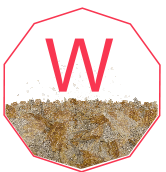Tungsten
Introduction
Tungsten stands as one of the most extraordinary elements on the periodic table, boasting the highest melting point of any metal, exceptional density, and remarkable hardness. This remarkable transition metal plays a crucial role in numerous industries and applications that shape our modern world—from the incandescent light bulbs that illuminated the 20th century to the cutting-edge tools that machine our precision components today.
In this comprehensive guide, we’ll explore the fascinating properties, diverse applications, and rich history of tungsten—the metal whose name literally means “heavy stone” in Swedish, yet carries the symbol “W” from its German name “wolfram.” Whether you’re a chemistry enthusiast, engineering student, or simply curious about the elements that make our technological world possible, this deep dive into tungsten will provide valuable insights into this indispensable metal.
The Fundamental Properties of Tungsten
General Information and Position in the Periodic Table
Tungsten occupies a distinguished position in the periodic table:
- Symbol: W
- Atomic Number: 74
- Atomic Weight: 183.84 u
- Element Category: Transition metal
- Group: 6
- Period: 6
- Block: d-block
This positioning among the transition metals gives tungsten its characteristic properties that make it so valuable for industrial applications.
Physical Properties That Set Tungsten Apart
What truly distinguishes tungsten from other metals are its remarkable physical properties:
- Appearance: Steel-gray to tin-white metallic luster
- Density: 19.25 g/cm³ (among the densest elements, nearly as dense as gold)
- Melting Point: 3422°C (6192°F) — the highest melting point of any metal
- Boiling Point: 5930°C (10706°F)
- Phase at Room Temperature: Solid
- Crystal Structure: Body-centered cubic (bcc)
- Hardness: Extremely high, especially in carbide form
- Thermal Conductivity: High, approximately 173 W/m·K
- Electrical Resistivity: About 52.8 nΩ·m at room temperature
- Magnetic Properties: Paramagnetic

This extraordinary melting point—over 3,400°C—means tungsten remains solid in environments where virtually all other elements would melt or vaporize. This property alone makes tungsten invaluable for applications involving extreme temperatures.
Chemical Properties and Behavior
At the atomic level, tungsten has the following characteristics:
- Electron Configuration: [Xe] 4f¹⁴ 5d⁴ 6s²
- Oxidation States: +6 (most common), +5, +4, +3, +2, +0
- Reactivity: Generally resistant to corrosion and relatively inert
- Compound Formation: Forms various oxides, sulfides, and halides under different conditions
Despite its stability, tungsten can form numerous compounds, the most important being:
- Tungsten Trioxide (WO₃): A yellow oxide used in electrochromic applications
- Tungsten Carbide (WC): Extremely hard carbide used in cutting tools and abrasives
- Tungsten Hexafluoride (WF₆): Used in semiconductor manufacturing
The combination of physical toughness and chemical versatility makes tungsten uniquely suited for specialized applications where other metals would fail.
The Diverse Applications of Tungsten in Modern Industry
Tungsten’s exceptional properties have made it indispensable across numerous industries. Let’s explore its most significant applications:
Lighting Technology
For most of the 20th century, tungsten was synonymous with electric lighting:
- Incandescent Bulbs: Tungsten filaments revolutionized lighting due to their high melting point and low vapor pressure, allowing them to glow white-hot without quickly evaporating
- Halogen Lamps: Advanced incandescent lamps use tungsten filaments in a halogen gas environment
- Electrodes: Used in certain high-intensity discharge lamps
While LED technology has largely replaced incandescent lighting, tungsten’s contribution to human development through reliable electric lighting cannot be overstated.
Cutting-Edge Tools and Manufacturing
Perhaps tungsten’s most important modern application is in tools and manufacturing:
- Tungsten Carbide Cutting Tools: Maintain their sharp edge even at high temperatures, making them ideal for cutting steel and other hard materials
- High-Speed Steel Alloys: Contain tungsten to improve hardness and heat resistance
- Drill Bits: Tungsten carbide tips dramatically increase drilling efficiency and tool life
- Metal-Working Dies: Withstand the pressure and wear of forming metal components
![Image of tungsten carbide cutting tools and drill bits]
Manufacturing professionals often refer to tungsten carbide as “the backbone of modern machining” due to its unparalleled ability to cut and shape other hard materials.
Electronics and High-Temperature Applications
Tungsten’s electrical properties and heat resistance make it vital in electronics:
- X-ray Tubes: Tungsten targets generate X-rays for medical imaging and industrial inspection
- Electron Emitters: Used in electron microscopes and other scientific instruments
- Electrodes: For TIG (Tungsten Inert Gas) welding
- Heat Shields: Protect components in extreme thermal environments
- Heat Sinks: Help manage thermal loads in high-power electronics
- Rocket Nozzles: Withstand the extreme temperatures of rocket exhaust
Specialized Applications
Other notable uses of tungsten include:
- Ammunition: Tungsten alloys are used in armor-piercing projectiles and high-density penetrators as alternatives to depleted uranium
- Counterweights: Its high density makes it ideal for applications requiring balance in minimal space
- Radiation Shielding: Used as a replacement for lead in some medical applications
- Catalysts: Employed in various chemical processes in the petroleum industry
- Superalloys: Essential component in high-performance alloys used in turbine blades and other demanding applications
The Natural Occurrence and Extraction of Tungsten
Where Tungsten Is Found
Unlike some metals, tungsten is never found in its pure state in nature. It occurs primarily in two minerals:
- Wolframite: An iron manganese tungstate mineral with the chemical formula (Fe,Mn)WO₄
- Scheelite: A calcium tungstate mineral with the formula CaWO₄
These minerals are typically found in:
- Granitic rocks and pegmatites
- Hydrothermal veins
- Contact metamorphic rocks (skarns)
- Placer deposits
The largest tungsten producers globally include China, Russia, Vietnam, Bolivia, and Portugal.
The Complex Process of Tungsten Extraction
Obtaining pure tungsten from its ores involves several sophisticated steps:
- Mining: Extraction of tungsten-bearing ore through underground or open-pit mining
- Beneficiation: Crushing and grinding the ore, followed by flotation or gravity separation to concentrate the tungsten minerals
- Chemical Processing:
- Conversion to ammonium paratungstate (APT) through digestion with sodium hydroxide
- Filtration and purification processes
- Precipitation of APT from the solution
- Reduction: Heating APT in hydrogen atmosphere to produce tungsten powder
- Powder Metallurgy: Compacting and sintering the powder to create solid tungsten products
This complex extraction process contributes to tungsten’s relatively high cost compared to more common metals.
The Science of Tungsten: Isotopes and Nuclear Properties
Stable Isotopes
Tungsten has five naturally occurring stable isotopes:
- Tungsten-180: 0.12% natural abundance
- Tungsten-182: 26.50% natural abundance
- Tungsten-183: 14.31% natural abundance
- Tungsten-184: 30.64% natural abundance
- Tungsten-186: 28.43% natural abundance
This isotopic diversity has made tungsten useful in certain geological dating methods and nuclear research.
Radioactive Isotopes
Several radioactive isotopes of tungsten exist, with Tungsten-181 being particularly notable for its use in scientific research. With a half-life of 121.2 days, W-181 emits gamma radiation that can be used in various experimental settings.
Safety Considerations and Handling Precautions
While tungsten metal is generally considered to have low toxicity compared to many other heavy metals, certain precautions should be observed:
- Tungsten Dust: Fine tungsten powder can be flammable and poses a fire hazard
- Inhalation Risks: Avoid breathing tungsten dust, particularly from tungsten carbide processing
- Environmental Concerns: Some tungsten compounds may present environmental challenges if improperly disposed of
Industrial users of tungsten should follow established safety protocols:
- Use appropriate ventilation when processing tungsten
- Implement dust control measures
- Wear protective equipment when handling fine tungsten powder
- Follow proper disposal procedures for tungsten-containing waste
The Fascinating History of Tungsten
Discovery and Naming
Tungsten has a captivating history dating back to the 18th century:
- Early Recognition: In 1781, Swedish chemist Carl Wilhelm Scheele discovered that a new acid could be made from the mineral now known as scheelite
- Isolation: In 1783, Spanish brothers Juan José and Fausto Elhuyar successfully isolated tungsten metal from wolframite, becoming the first to identify the element
- Naming Confusion: The element’s dual naming heritage—”tungsten” from Swedish meaning “heavy stone” and “wolfram” from German—has led to its unusual symbol W despite being commonly called tungsten in English-speaking countries
Historical Applications
Tungsten’s applications have evolved significantly:
- Early Steel: By the late 19th century, tungsten was recognized as a valuable additive to steel
- Light Bulb Revolution: In 1904, tungsten filaments began replacing carbon filaments in light bulbs, dramatically improving their efficiency and longevity
- World War Contributions: During both World Wars, tungsten became strategically important for armor-piercing ammunition and tool steel
- Modern Innovations: The development of powder metallurgy techniques in the 20th century expanded tungsten’s applications dramatically
Future Prospects and Emerging Applications
Tungsten continues to find new applications in cutting-edge technologies:
- Advanced Electronics: Used in next-generation electronic devices
- Medical Applications: Being explored for targeted radiation therapy and imaging
- Aerospace Materials: Critical component in high-temperature aerospace alloys
- Energy Storage: Being investigated for certain battery technologies
- Sustainable Technologies: Finding uses in various green technologies due to its durability and recyclability
Research into tungsten nanoparticles and novel alloys promises to expand its utility even further in coming decades.
Frequently Asked Questions About Tungsten
Basic Properties
Q: What is the atomic number of tungsten? A: Tungsten’s atomic number is 74.
Q: Why does tungsten have the symbol “W” instead of “T”? A: The symbol W comes from “wolfram,” the German name for the element.
Q: What makes tungsten special among metals? A: Tungsten has the highest melting point of any metal (3422°C), extreme hardness (especially as tungsten carbide), and high density (19.25 g/cm³).
Q: Is tungsten magnetic? A: Tungsten is paramagnetic, meaning it is weakly attracted to magnetic fields but does not retain magnetism.
Applications and Uses
Q: Why was tungsten used in light bulbs? A: Tungsten’s extremely high melting point and low vapor pressure made it ideal for light bulb filaments that could glow white-hot without quickly evaporating.
Q: What makes tungsten carbide so important for cutting tools? A: Tungsten carbide combines extreme hardness with good thermal stability, allowing tools to maintain sharp cutting edges even at high temperatures.
Q: Is tungsten used in jewelry? A: Yes, tungsten carbide has become popular for wedding bands and other jewelry due to its scratch resistance, durability, and lustrous appearance when polished.
Q: How is tungsten used in radiation shielding? A: Tungsten’s high density makes it effective at blocking radiation, serving as an alternative to lead in some medical and nuclear applications.
Safety and Handling
Q: Is tungsten toxic? A: Pure tungsten metal has low toxicity, but some tungsten compounds may pose health concerns. The greatest risk comes from inhaling tungsten dust, particularly from tungsten carbide processing.
Q: Why is tungsten dust considered hazardous? A: Fine tungsten powder can be flammable and pose a fire hazard. Additionally, inhalation of tungsten carbide dust, especially with cobalt content, can pose respiratory risks.
Conclusion
Tungsten represents one of humanity’s most valuable elemental resources—a metal whose extraordinary properties have enabled countless technological advancements. From the humble light bulb that illuminated the 20th century to the sophisticated cutting tools that shape our modern world, tungsten continues to play an indispensable role in industry and technology.






